Gliding through marshes and lakes with remarkable precision, some dogs are born for waterfowl retrieval. These dogs aren’t just loyal companions—they’re skilled working partners bred to retrieve ducks from water with agility, stamina, and an unwavering drive to please. Their calm focus, keen instincts, and natural love for water make them ideal for hunters who rely on both performance and obedience in the field.
Selective breeding over centuries has produced canines perfectly suited for duck retrieval. Many hail from the Sporting group—dogs originally developed to assist hunters by flushing, pointing, or retrieving game.
These breeds possess water-resistant coats, webbed feet, and the endurance to swim in cold lakes for extended periods, all while following commands with accuracy and enthusiasm. Their intelligence and adaptability make them top contenders for duck retrieval duties.
In this article, we’ll explore the best duck-retrieving breeds, focusing on their history, strengths, and what sets them apart. Whether you’re a seasoned waterfowler or seeking a smart, water-loving companion, these breeds combine heart, heritage, and high performance in every splash.
Dog Breeds That Retrieve Ducks From Lakes
1. American Water Spaniel
The American Water Spaniel, also affectionately known as the AWS, is a rare yet highly capable duck-retrieving dog originating from the Midwest, particularly Wisconsin. The American Kennel Club describes them as cheerful, enthusiastic, and endearing dogs, though they can be reserved around unfamiliar people and occasionally display a stubborn streak.
Developed in the late 1800s, this breed was tailored for versatility, excelling at retrieving waterfowl from canoes and navigating both marshy terrain and icy waters with ease. Standing between 15–18 inches tall and weighing 25–45 pounds, the AWS is medium-sized, compact, and muscular with a distinctive curly, water-resistant coat in shades of liver or dark brown.
This hunting breeds webbed feet and padded paws that aid in agility both on land and in the water. The breed belongs to the Sporting group and typically enjoys a lifespan of 10 to 14 years.
Exercise
True to its origins, the American Water Spaniel is an active breed that thrives with daily physical and mental stimulation. It enjoys swimming, running, and long games of fetch, especially near water.
Without regular outlets for energy, AWS dogs can become vocal or exhibit destructive behavior. A combination of backyard play, structured activities, and, ideally, hunting work or water games is ideal to meet its needs.
Did you know? The American Water Spaniel is Wisconsin’s official state dog.
2. Poodle
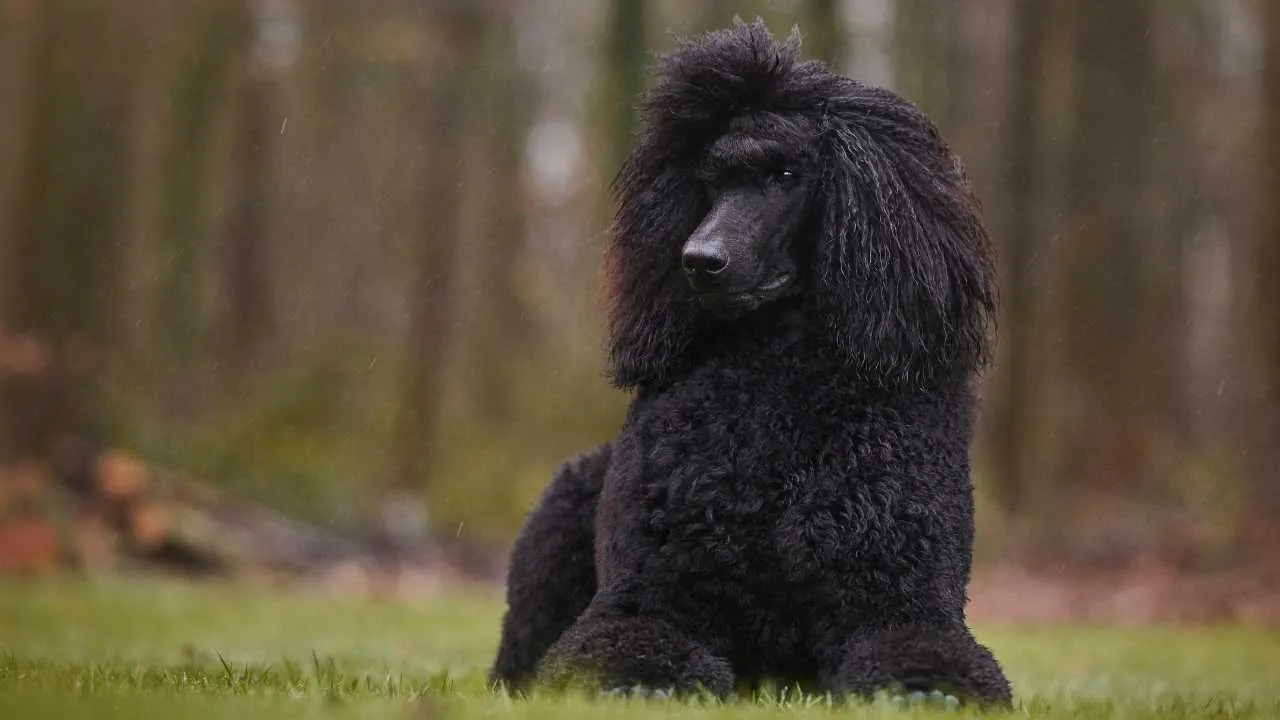
The Standard Poodle, often underestimated due to its elegant appearance, is actually one of the most capable duck retrievers in the canine world. WebMD describes Poodles as an enthusiastic breed, easily recognized by their distinctive curly coats.
Originating in Germany but closely associated with France, this breed was originally developed as a water retriever—hence the nickname “Caniche,” or duck dog, in French. Standing over 15 inches tall and weighing up to 70 pounds, the Standard Poodle is a robust and agile dog.
Its dense, curly coat not only adds to its beauty but also serves a practical function: protecting the dog from cold water during retrievals. Recognized in the Non-Sporting Group by the AKC, the breed lives an impressive 10–18 years on average and excels in both field work and obedience sports.
Exercise
Standard Poodles require about an hour of daily exercise to stay physically and mentally stimulated. They thrive on active play like swimming, fetching, and structured walks. Their agility and eagerness to please make them not just obedient companions but also standouts in dog sports and field training.
Did you know? The breed’s name comes from the German word pudelin, meaning “to splash”—a nod to their duck-retrieving legacy.
3. German Shorthaired Pointer
The German Shorthaired Pointer (GSP), also known simply as the GSP, is a versatile and athletic breed developed in Germany in the mid-19th century. Standing between 21 and 25 inches tall and weighing 45 to 70 pounds, this sporting dog is admired for its muscular build, endurance, and water-repellent coat—features that make it a natural retriever of ducks.
While not a traditional retriever, the GSP’s ability to hunt, point, and retrieve both on land and in water has earned it a reputation as an “all-rounder” in duck hunting circles. PetMD explains that in this poised position, the dogs patiently wait for a cue from their hunter to drive the animal out of hiding.
This breed is known for its keen sense of smell, sharp instincts, and webbed feet, which allow it to navigate lakes and wetlands with ease. Its short, dense coat dries quickly after water activities, adding to its functionality in the field.
Exercise
German Shorthaired Pointers are incredibly energetic and require significant daily activity to stay balanced. Ideally, they should receive one to two hours of physical and mental stimulation each day.
Long walks, off-leash running, fetch, and swimming are excellent ways to keep this breed fit and happy. Without adequate exercise, they may resort to destructive behaviors born from boredom or excess energy.
Did you know? The GSP was originally bred to point and retrieve ducks, rabbits, and even deer, showcasing its impressive range of hunting capabilities..
4. Chesapeake Bay Retriever
Originally developed along the stormy shores of Maryland’s Chesapeake Bay, the Chesapeake Bay Retriever—often called the “Chessie”—was bred to retrieve waterfowl in cold, rough waters. A true American original, this medium to large sporting breed stands 21–26 inches tall and weighs between 55–80 pounds.
Its dense, short, and oily waterproof coat offers natural protection against icy conditions, making it ideal for lake and marshland hunting.
The Chessie is well-muscled, with a strong jaw and powerful build, and its wavy coat in shades of brown, sedge, or deadgrass helps it blend into natural environments. Highly intelligent and devoted, this breed is also known for its independent streak, which can challenge novice handlers.
Exercise
Chesapeake Bay Retrievers require more than two hours of vigorous activity daily. Ideal routines include walking on varied terrain, swimming, and—of course—retrieving games.
These dogs love to work in any weather and won’t appreciate a day off. Keeping them physically and mentally stimulated is key to preventing boredom and behavioral issues.
Did you know? Chessies were the preferred duck dogs of commercial hunters in the late 1800s due to their unmatched endurance and water-retrieving skills.
5. Nova Scotia Duck Tolling Retriever
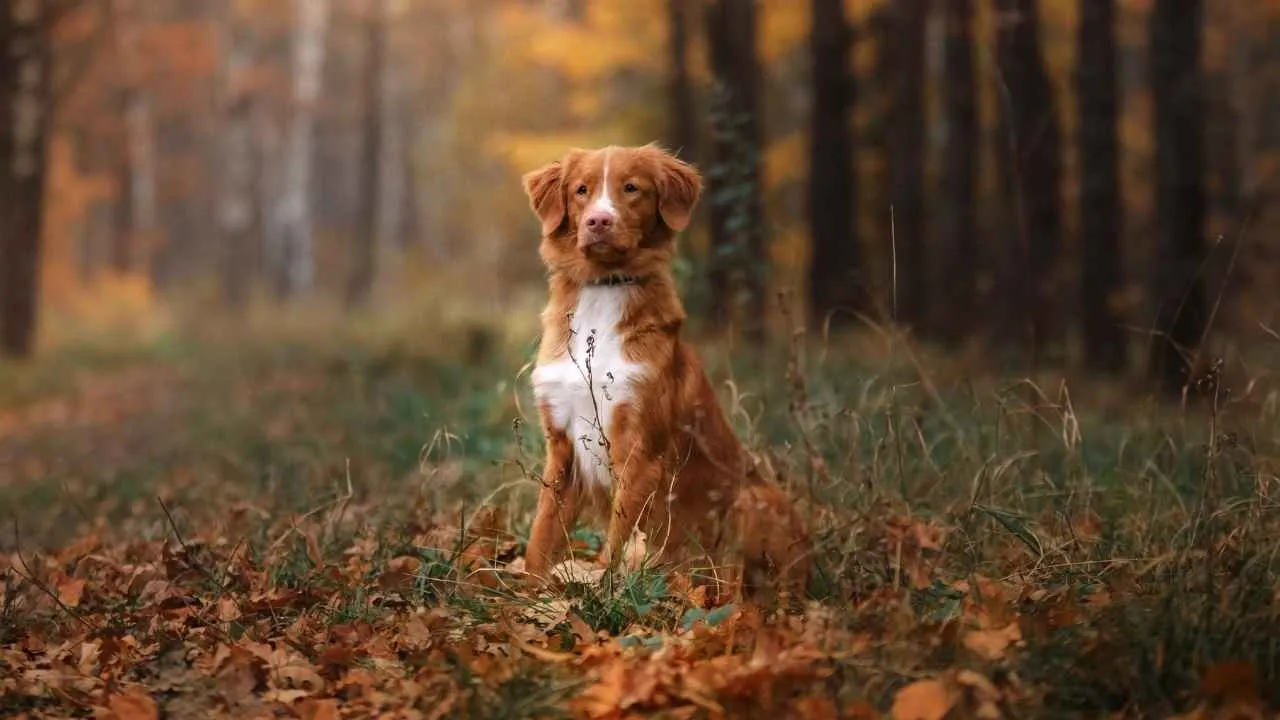
Also known as the Toller, Little River Duck Dog, or Yarmouth Toller, the Nova Scotia Duck Tolling Retriever is the smallest of the retriever breeds, originally developed in the 19th century in Nova Scotia, Canada. Bred specifically to “toll” or lure ducks within gun range before retrieving them, this breed combines high intelligence, playfulness, and a strong work ethic.
Males typically stand between 18–21 inches tall and weigh around 35–50 pounds. They feature a dense, water-repellent double coat in shades of red or orange, often with white markings on the chest, face, tail tip, or feet. With their alert expression, fluffy tails, and boundless energy, Tollers are both visually striking and highly functional waterfowl hunters.
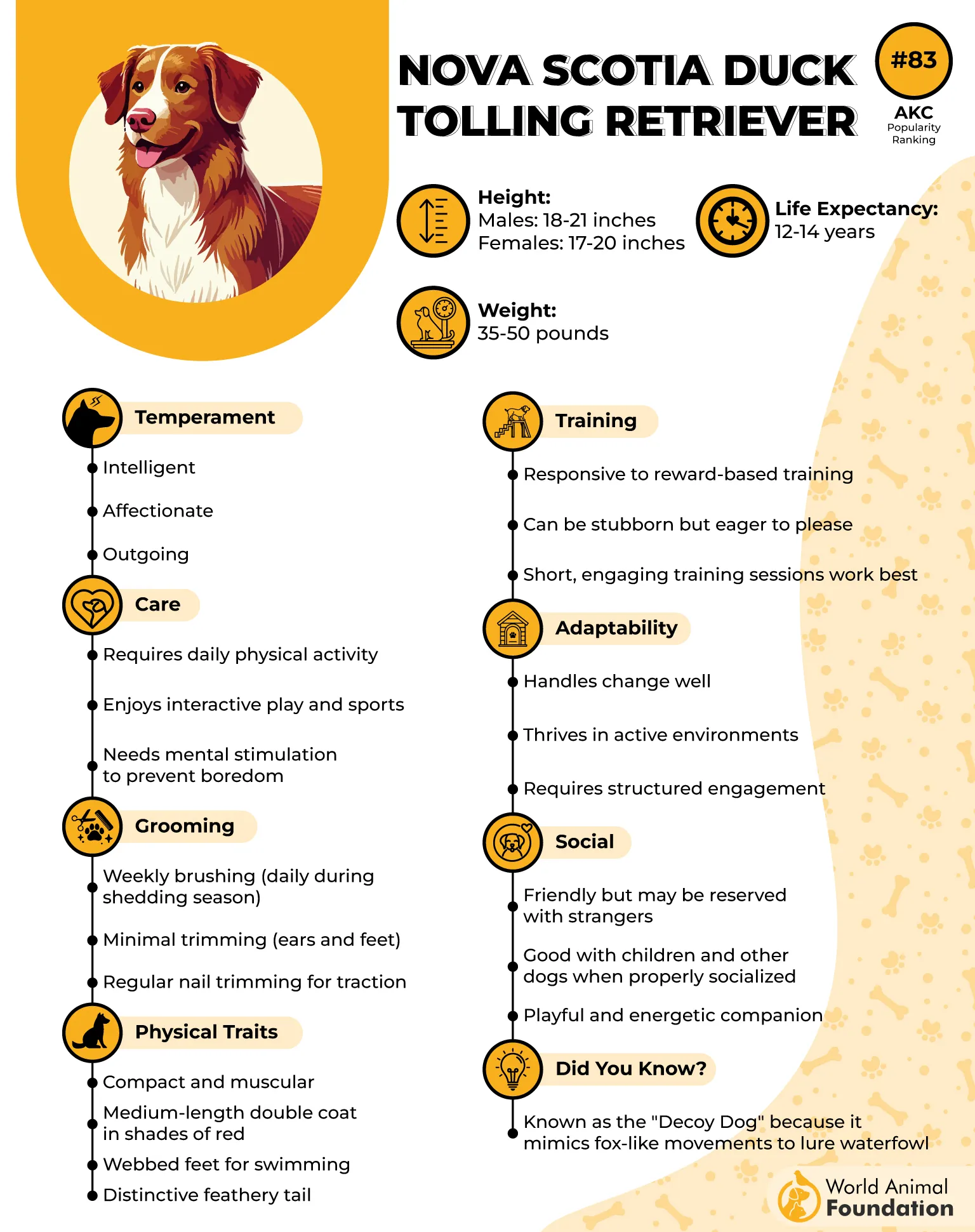
Exercise
Tollers are energetic sporting dogs who thrive on physical activity. A daily brisk 30-minute walk, coupled with engaging games like fetch, can satisfy most of their needs.
Some Tollers, however, require additional mental stimulation or off-leash play to stay content. Without proper exercise, they may become restless or bored.
Did you know? The Nova Scotia Duck Tolling Retriever holds the record for the longest name in the AKC stud book.
6. Irish Water Spaniel
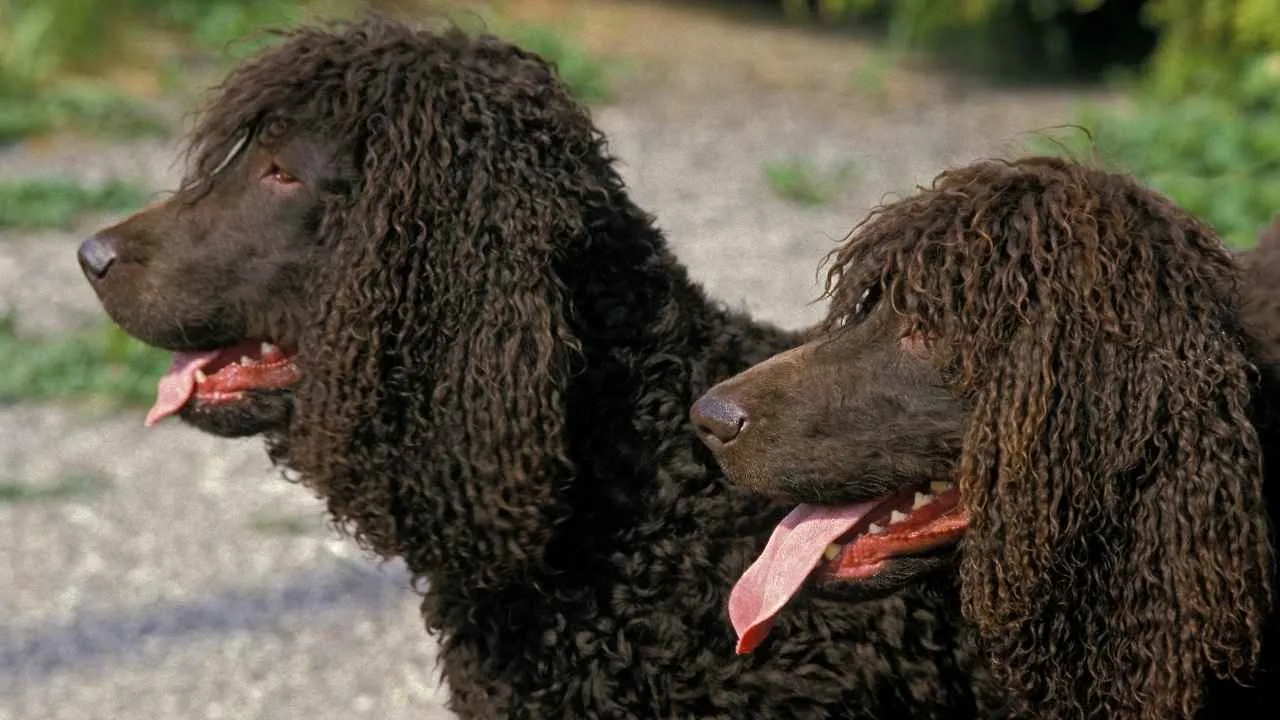
The Irish Water Spaniel, often dubbed the “clown of the spaniel family,” is one of the oldest and largest spaniel breeds. Originating in Ireland in the 1830s, it was purposefully bred for retrieving game in marshy, cold environments.
Weighing between 45 to 65 pounds and standing 21–24 inches tall, this liver-colored sporting breed is easily recognized by its dense, water-repellent curls and unique “rat tail.” It has a long, domed head crowned by a topknot of loose curls, low-set lobular ears, and hazel eyes, all contributing to its expressive and distinguished appearance.
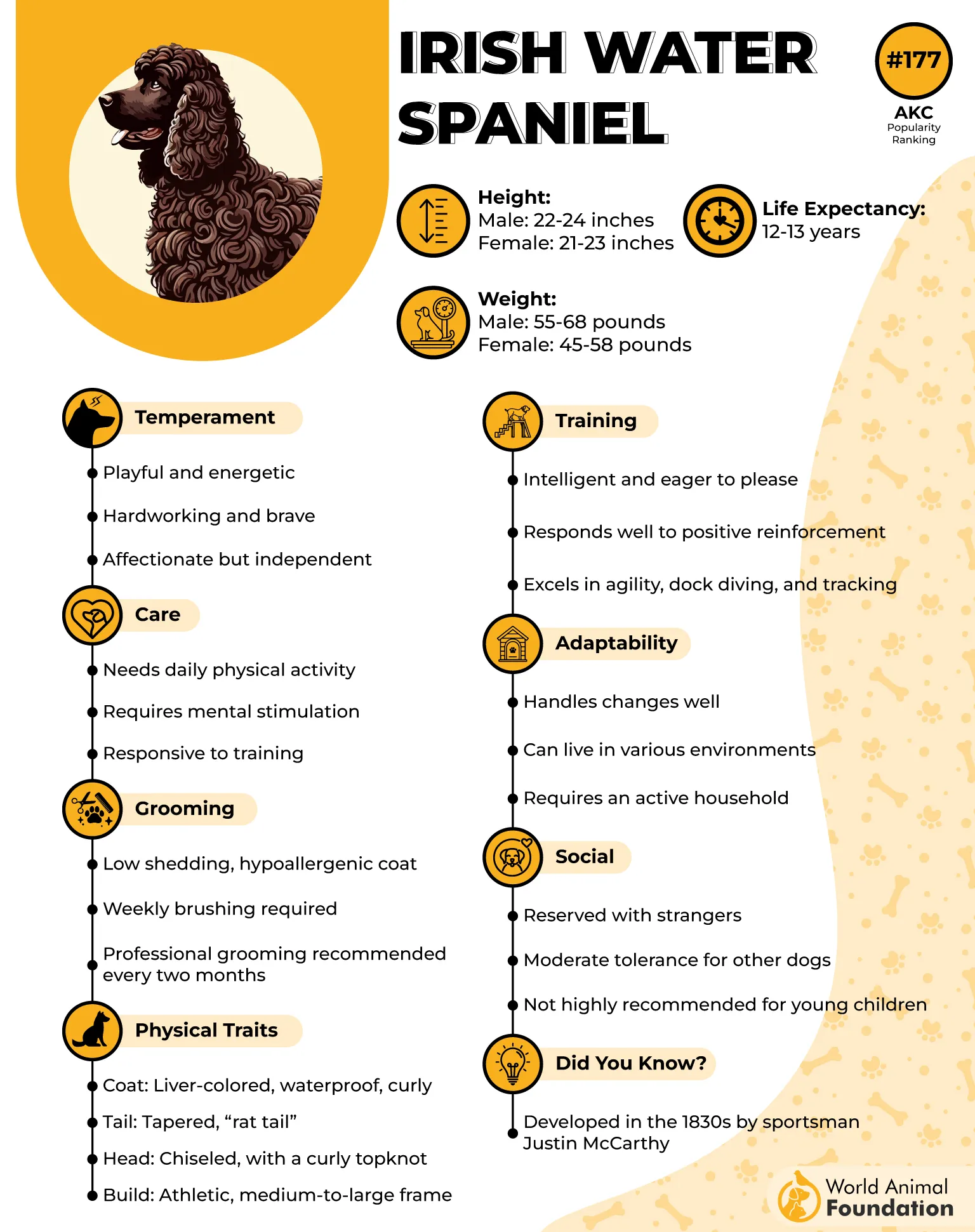
Known for their intelligence, trainability, and lively spirit, these dogs are affectionate companions that transition seamlessly from active hunters to loyal family pets.
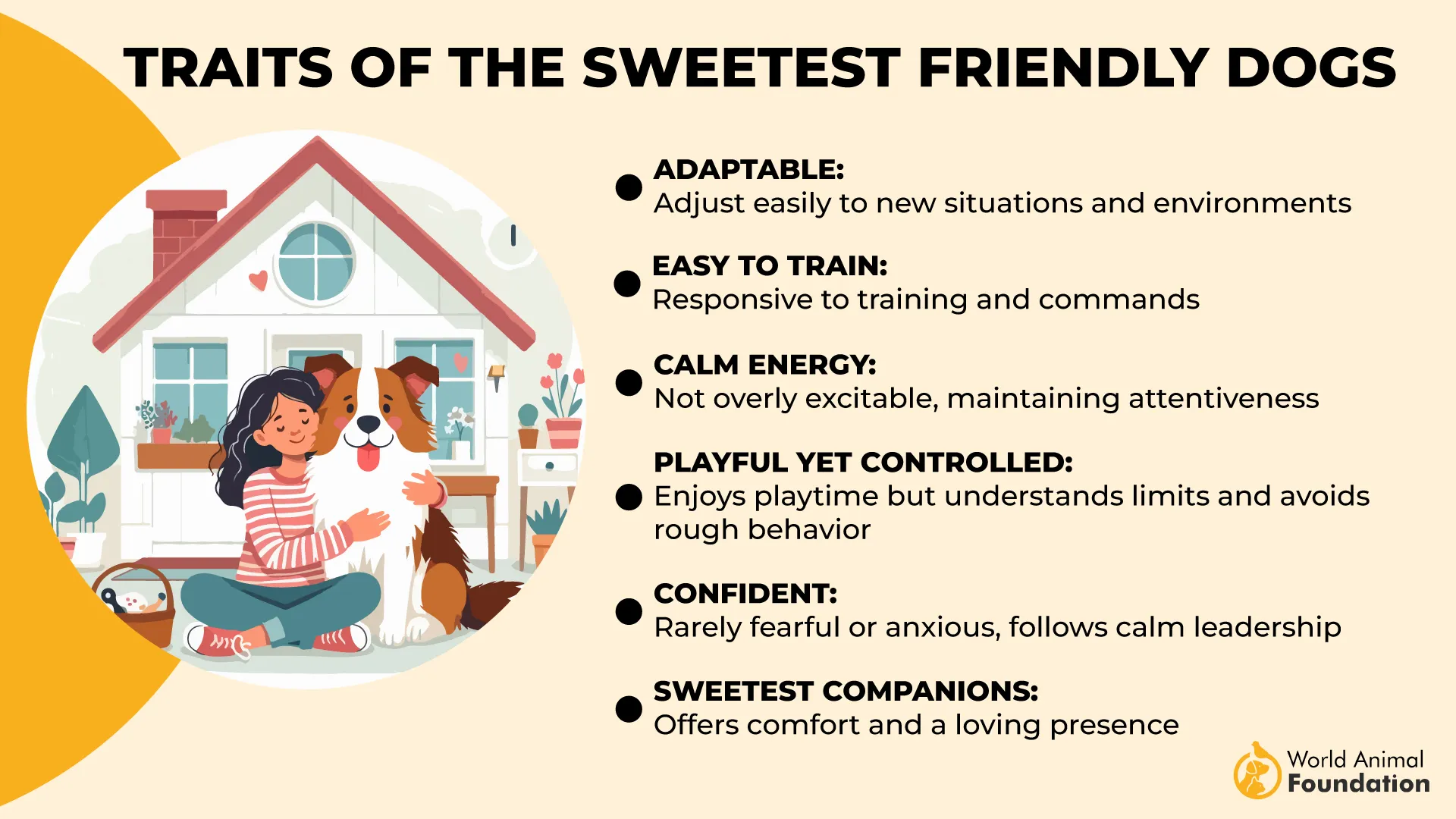
Exercise
These hunting dogs are incredibly active and need ample daily physical and mental stimulation. A minimum of 1 to 2 hours of exercise—such as swimming, fetching, or long walks—is essential to keep them happy and fit. Their working heritage and endurance make them ideal for outdoor enthusiasts who can match their energy levels.
Fun Fact: The Irish Water Spaniel’s coat sheds water so efficiently that it protects the dog in freezing weather, making it an exceptional retriever in cold lake conditions.
7. Labrador Retriever
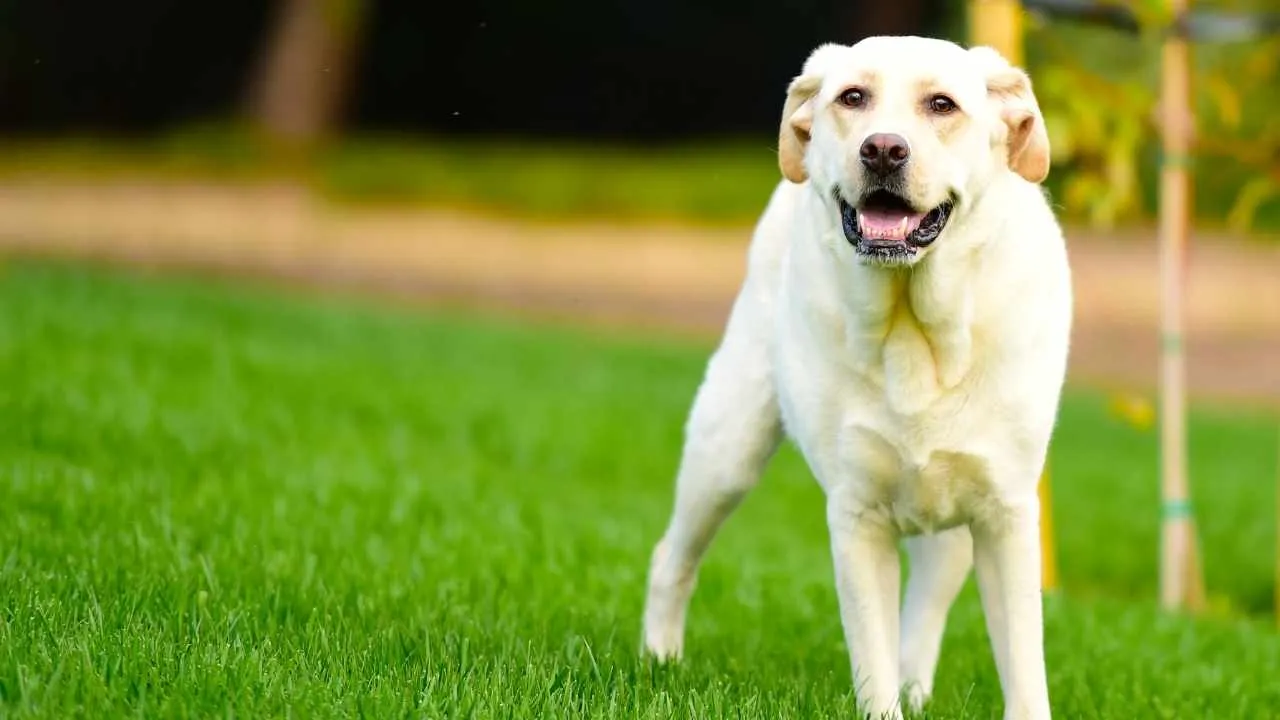
The Labrador Retriever, affectionately known as the Lab, originated in Newfoundland and is one of the most beloved and versatile breeds worldwide. Originally used by fishermen to retrieve nets and fish, Labs evolved into dependable duck retrievers, prized for their obedience, intelligence, and stamina.
They were brought to England around 1800 and officially recognized as a sporting breed in 1903. Labradors are medium to large dogs, standing 21.5–24.5 inches tall and weighing 55–80 pounds.
They have a dense, water-resistant coat in yellow, chocolate, or black, along with distinctive webbed feet and a strong “otter tail” that helps propel them in water. Labs belong to the Sporting Group and typically live 10–12 years.
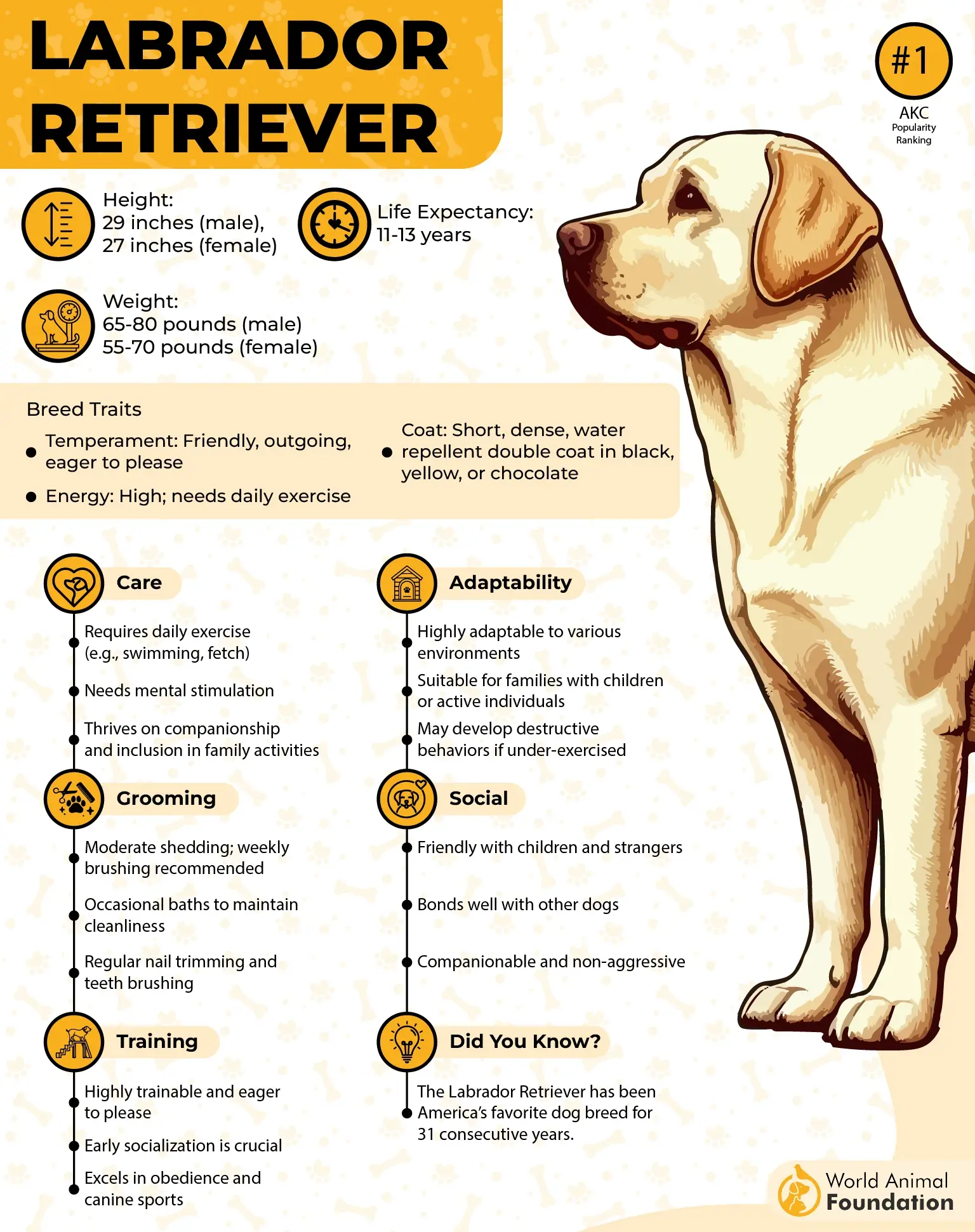
Exercise
Despite their calm and sociable nature, Labradors are energetic dogs that need significant daily activity to stay healthy and focused. About two hours of exercise a day—through swimming, long walks, or fetch games—is ideal. This not only keeps them physically fit but also sharpens their retrieving instincts, making them excellent partners for waterfowl hunting.
Did you know? A Labrador Retriever named Endal once saved his disabled owner’s life by performing a sequence of emergency tasks, earning him the title “Dog of the Millennium.”.
Conclusion
Whether you’re a seasoned hunter or just starting out, choosing the right dog for hunting ducks can transform your outdoor experience. Breeds specifically developed as waterfowl dogs or bird dogs offer unmatched performance in water retrieval tasks. Their natural hunting instincts, endurance, and love for swimming make them excellent waterfowl dogs. These canines aren’t just valuable in the field—they also bring a friendly and gentle nature to the home, blending purpose with affection.
Beyond duck retrieval, many of these breeds are skilled in upland hunting, capable of flushing and retrieving upland birds with equal enthusiasm. While retrievers may take center stage, other hunting breeds like setters and spaniels also demonstrate impressive versatility. Their trainability and sociable temperament mean they double as wonderful family pets or devoted family pets when not in action. When choosing your next companion, look for a breed that offers both performance in the field and warmth at home.


